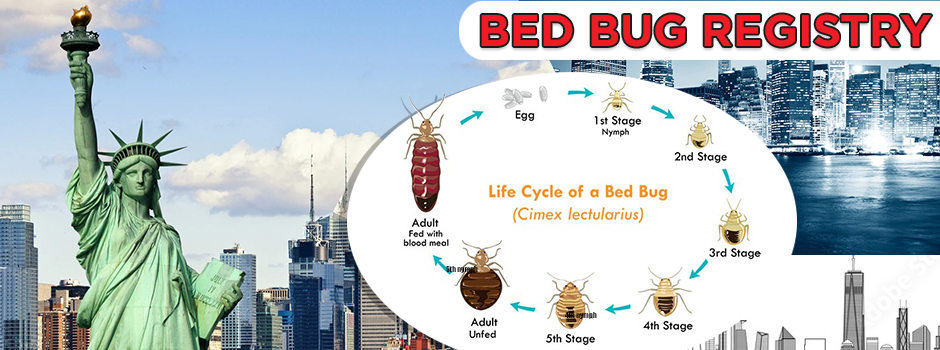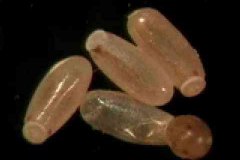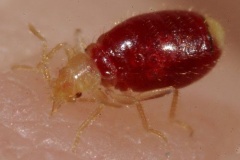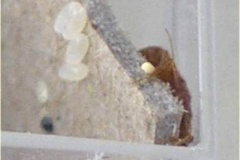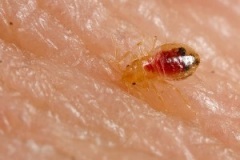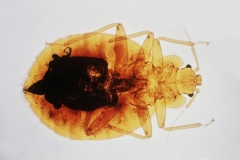Categories
- Bed Bug
- Bed Bug Cream
- BED BUG DATABASE
- Bed Bug Home Remedies
- Bed Bug Oil
- Bed Bug Remedies
- Bed Bug Spray
- Bed Bugs New York
- Bed Bugs Vancouver
- Bed Bugs World
- Bed Bugs American Samoa
- Bed Bugs Canada
- Bed Bugs Guam
- Bed Bugs North Mariana islands
- Bed Bugs Puerto Rico
- Bed Bugs United States
- Bed Bugs Alabama
- Bed Bugs Alaska
- Bed Bugs Arizona
- Bed Bugs Arkansas
- Bed Bugs California
- Bed Bugs Colorado
- Bed Bugs Connecticut
- Bed Bugs Delaware
- Bed Bugs Florida
- Bed Bugs Georgia
- Bed Bugs Hawaii
- Bed Bugs Idaho
- Bed Bugs Illinois
- Bed Bugs Indiana
- Bed Bugs Iowa
- Bed Bugs Kansas
- Bed Bugs Kentucky
- Bed Bugs Louisiana
- Bed Bugs Maine
- Bed Bugs Maryland
- Bed Bugs Massachusetts
- Bed Bugs Michigan
- Bed Bugs Minnesota
- Bed Bugs Mississippi
- Bed Bugs Missouri
- Bed Bugs Montana
- Bed Bugs Nebraska
- Bed Bugs Nevada
- Bed Bugs New Hampshire
- Bed Bugs New Jersey
- Bed Bugs New Mexico
- Bed Bugs New York
- Bed Bugs North Carolina
- Bed Bugs North Dakota
- Bed Bugs Ohio
- Bed Bugs Oklahoma
- Bed Bugs Oregon
- Bed Bugs Pennsylvania
- Bed Bugs Rhode Island
- Bed Bugs South Carolina
- Bed Bugs South Dakota
- Bed Bugs Tennessee
- Bed Bugs Texas
- Bed Bugs Utah
- Bed Bugs Vermont
- Bed Bugs Virgin Islands
- Bed Bugs Virginia
- Bed Bugs Washington
- Bed Bugs Washington DC
- Bed Bugs West Virginia
- Bed Bugs Wisconsin
- Bed Bugs Wyoming
- BedBug Removal
- BedBugs in Michigan
- Canada Bed Bugs
- Do it yourself Bed Bug
- Exterminator Bed Bugs
- Health
- Pest Inspection
- Toronto Bed Bugs
- Welcome to Bed Bugs
Registry Sites List
- Bronx Bed Bug Registry Infestation Maps, Residential And Hotel
- Brooklyn Bed Bug Registry Infestation Maps, Residential And Hotel
- Manhattan Bed Bug Registry Infestation Maps, Residential And Hotel
- Nyc Bed Bug Registry Infestation Maps, Residential And Hotel
- Queens Bed Bug Registry Infestation Maps, Residential And Hotel
- Staten Island Bed Bug Registry Infestation Maps, Residential And Hotel
Recommended Sites
Author Archives: Pest Controller
News Links:
Treating Bed Bug Bites / How to Treat Bed Bug Bites
After the initial reaction of discovering bed bugs in your home it is very likely the next thought will be:
Can they make my family sick?
The good news is that there have been very few cases of bed bug bites causing more than inflammation at the sight of feeding. Though getting rid of the bugs and keeping them from coming back is a headache, you can rest knowing that they are more a disgusting annoyance than a danger to your health.
Lets take a closer look at bed bug bites and bed bug bite symptoms.
How do you know when you have been bitten by a bed bug?
Bed bugs pierce the skin of the host with their elongated beaks. The bed bug injects an anti-blood-clotting chemical called apyrases which allow them to withdraw the blood. They will feed for 5-10 minutes until gorged.
There is no one overall reaction to being a host. The reality is that most people do not even know they are the source of the bed bugs meal. There may be no obvious marks on their body and no sense of having been bitten. The majority of the time bed bugs feast while their hosts are sleeping which is another reason they are less likely to feel such a tiny sensation.
Not everyone is this lucky. There are reported and verified cases in which the host has a severe reaction, often in the form of swelling, and welts. Because the bed bug does its by night, many times the reaction of redness, swelling or itching is attributed to mosquitoes. This of course, allows for the infestation to continue until the bed bugs are discovered.
One telling sign of the bed bug bite versus that of the more familiar mosquito is the body part which contains the redness or swelling. Bed bugs tend to host on parts of the body that are exposed while sleeping. Therefore, you are going to find them on the neck, face, upper arms, shoulders and hands.
As mentioned earlier, in most cases there is no major concern of illness caused by serving as a host to bed bugs. There are however, pathogens that are found in the body of the bed bugs but they do not seem to be transmitted to humans or other hosts. Generally, the bites are more annoying than they are dangerous. Much like other bug bites, that of the bed bug tends to be itchy and may cause inflammation when scratched. It is important to remember that scratching that itch can further cause infection.
The best way to treat the bed bug bites are to relieve the bite symptoms with the use of an antihistamine or corticosteroids prescribed to reduce discomfort. Other over the counter topical ointments may also be used.
A well regarded product combination that fits the bill is All Stops Healing Gel and ProEcza Cream. The ProEcza relieves your itchy skin while the Healing Gel goes to work deeper into the infected bite to minimize the irritation. What this means is that it helps you stop itching right away and it also calms the irritation down so your skin reaction isnt so severe. Youve seen pictures of bed bug bites they can be embarrassing to go out in public with.
Just as with any treatment to a wound, especially with children, the infirm or the elderly, it is wise to talk to a physician or pharmacist to help you find the best relief of the discomfort caused by bed bug bites.
More here:
Treating Bed Bug Bites / How to Treat Bed Bug Bites
Posted in Bed Bug Cream
Comments Off on Treating Bed Bug Bites / How to Treat Bed Bug Bites
bed bug – Cimex lectularius Linnaeus
common name: bed bug scientific name: Cimex lectularius Linnaeus (Insecta: Hemiptera: Cimicidae) Introduction - Distribution - Description - Life Cycle - Survey and Management - Selected References Introduction (Back to Top)
Sometimes referred to as red coats, chinches, or mahogany flats (USDA 1976), bed bugs, Cimex lectularius Linnaeus, are blood-feeding parasites of humans, chickens, bats and occasionally domesticated animals (Usinger 1966). Bed bugs are suspected to carry leprosy, oriental sore, Q-fever, and brucellosis (Krueger 2000) but have never been implicated in the spread of disease to humans (Dolling 1991). After the development and use of modern insecticides, such as DDT, bed bug infestations have virtually disappeared. However, since 1995, pest management professionals have noticed an increase in bed-bug-related complaints (Krueger 2000).
Figure 1. Adult bed bug, Cimex lectularius Linnaeus, feeding. Photograph by Joseph Smith, University of Florida.
Human dwellings, bird nests, and bat caves are the most suitable habitats for bed bugs because they offer warmth, areas to hide, and hosts on which to feed (Dolling 1991). Bed bugs are not evenly distributed throughout the environment but are concentrated in harborages (Usinger 1966). Within human dwellings, harborages include cracks and crevices in walls and furniture, behind wallpaper and wood paneling, or under carpeting (Krueger 2000). Bed bugs are usually only active during the night but will feed during the day when hungry (Usinger 1966). Bed bugs can be transported on clothing, and in luggage, bedding and furniture (USDA 1976)/ Bed bugs lack appendages that allow them to cling to hair, fur, or feathers, so they are rarely found on hosts (Dolling 1991).
The adult bed bug is a broadly flattened, ovoid insect with greatly reduced wings (Schuh and Slater 1995). The leathery, reduced fore wings (hemelytra) are broader than they are long, with a somewhat rectangular appearance. The sides of the pronotum are covered with short, stiff hairs (Furman and Catts 1970). Before feeding, bed bugs are usually brown in color and range from 6 to 9.5 mm in length. After feeding, the body is swollen and red in color (USDA 1976).
Figure 2. Dorsal view of an adult bed bug, Cimex lectularius Linnaeus. Photograph by David Almquist, University of Florida.
Figure 3. Lateral view of an adult bed bug, Cimex lectularius Linnaeus. Photograph by Joseph Smith, University of Florida.
Figure 4. Nymph of the bed bug, Cimex lectularius Linnaeus. Photograph by Joseph Smith, University of Florida.
The two bed bugs most important to man are the common bed bug, Cimex lectularius, and the tropical bed bug, Cimex hemipterus. These two species of bed bugs can be easily distinguished by looking at the prothorax, the first segment of the thorax. The prothorax of the common bed bug is more expanded laterally and the extreme margins are more flattened than that of the tropical bed bug (Ghauri 1973).
Because of their confined living spaces, copulation among male and female bed bugs is difficult. The female possesses a secondary copulatory aperture, Ribaga's organ or paragenital sinus, on the fourth abdominal sternum where spermatozoa from the male are injected. The spermatozoa then migrate to the ovaries by passing through the haemocoel, or body cavity (Dolling 1991). The female bed bug lays approximately 200 eggs during her life span at a rate of one to 12 eggs per day (Krueger 2000). The eggs are laid on rough surfaces and coated with a transparent cement to adhere them to the substrate (Usinger 1966). Within six to 17 days bed bug nymphs, almost devoid of color, emerge from the eggs. After five molts, which take approximately ten weeks, the nymphs reach maturity (USDA 1976).
Bed bugs are most active at night, so their infestations are not easily located (Snetsinger 1997). However, when bed bugs are numerous, a foul odor from oily secretions can easily be detected (USDA 1976). Other recognizable signs of a bed bug infestation include excrement left around their hiding places (Dolling 1991) and reddish brown spots on mattresses and furniture (Frishman 2000). Good sanitation is the first step to controlling the spread of bed bugs. However, upscale hotels and private homes have recently noted infestations, suggesting that good sanitation is not enough to stop a bed bug infestation (Krueger 2000).
If bed bugs are located in bedding material or mattresses, control should focus on mechanical methods, such as vacuuming, caulking and removing or sealing loose wallpaper, to minimize the use of pesticides (Frishman 2000). The effectiveness of using steam cleaners or hot water to clean mattresses is questionable. Heat is readily absorbed by the mattress and does no harm to the bed bug. For severe infestations, however, pesticides may be used. Care should be taken not to soak mattresses and upholstery with pesticides. Allow bedding and furniture to dry thoroughly before using. One study shows that over-the-counter foggers are not effective for controlling bed bugs (Jones and Bryant 2012).
Florida Insect Management Guide for bed bugs
See the rest here:
bed bug - Cimex lectularius Linnaeus
Posted in Bed Bug Cream
Comments Off on bed bug – Cimex lectularius Linnaeus
bed Bug Bites: Photos And Information
These are photos of bed bug bites submitted by Bedbugger readers or found on the bed bugs pool on flickr.
Click photo to get to flickr, and choose all sizes to see larger photos.
Bed bug bites look very different from one person to another. Some bedbug bites are larger, some smaller, some have a red dot in the center, or a scab, others dont, some look like mosquito bites or pimples. Some bed bug bites are in groups of 2 or three (a pattern known as breakfast, lunch, and dinner), or in a line, or in a circle. Others are single bites.
Ive heard from experts that whether you get multiple bites in a pattern may have to do with whether the bed bug is disturbed while feeding (if you move, they may move and start over) and also whether your veins are easily accessed by the bed bugs (if they are, they need pierce only once).
Dermatologists and PCOs cannot identify a bed bug bite or distinguish it from something with another cause.
A dermatologist can test a skin reaction and determine its an insect bite, but cannot be certain its from bed bugs.
Many people dont even react to bed bug bites.
For this reason, you cant be sure you have bed bugs unless you find visual evidence (bed bugs, a cast skin, bed bug eggs, or fecal stains). See this gallery for pictures of bed bugs and signs of bed bugs.
However, people still do ask what bed bug bites look like, so below are some examples.
Note that we have a FAQ on remedies for itching caused by bed bug bites, and additional posts about bed bug bites, photos of bed bugs bites and bed bugs biting, and other related topics.
Now for the examples:
Amys photo:
Bassommeijers photos:
The caption to this one mentions bigger bites that did not itch:
Note the shape of a devil in this one also from Bassommeijer (couple bitten in Argentina):
Ss photos:
BittenWomans photos
BBsBlows photos are here.
You can see some of Lou Sorkins photos here and here. The first photo shows no difference between a nymph and adult bite.
For some background on bed bug bites, heres a post from October 2006 about doctors (not) diagnosing them, which links to a number of photos of bed bug bites that do, and dont, look typical. Also, see this series of articles (with additional photos) about Ss experiments with intentionally being bitten to see how nymph and adult bites compare, and to see if apparently unbitten G reacts when bitten.
To see additional bite photos, click on any of the following DermAtlas, and APictureofMes Bite Photos. Also, additional bite photos can be found at the bed bugs / bedbugs photo pool on flickr.com. And these are photos of entomologist Lou Sorkins arm after he is bitten by many bed bugs at once.
If you want me to post your photo of bugs, bites, or mattresses on flickr.com and link to them from Bedbugger, please post them on your flickr.com account and send me the link, and I will add them here. You can start a free, anonymous flickr account by going to http://flickr.com
If you have your own flickr account, please join the bed bugs / bedbugs photo group, and post your bedbug-related photos there (I can link to those photos here if you let me know!)
Thanks for helping people see the variety of ways bed bug bites can manifest themselves on people.
Comments for this page are now closed. Please post a message on our Bedbugger Forums if you have questions or need support. If you have suggestions or want to share your photos, please contact me.
Last updated 3/7/2015
Continue reading here:
bed Bug Bites: Photos And Information
Posted in Bed Bug Cream
Comments Off on bed Bug Bites: Photos And Information
What Are Bed Bugs and What Do the Bites Look Like?
Bed bugs resurged worldwide in the late 1990s.Once limited to hotel and motel rooms, these blood-sucking insects (both the Cimex lectularius and Cimex hemipterus) became a problem in many homes, hotels, and even movie theaters.
These recent infestations are probably due to insecticide resistance and increased international travel, according to a study published in Clinical Microbiology Review.
Fortunately, bed bugs aren't known to spread contagious diseases.
However, these blood-sucking insects can cause anemia if you get too many and may trigger asthma attacks.
With an appearance like many other common bites, bed bug bites often appear as small itchy raised red areas on exposed skin - usually a few days after the actual bite. Some children and adults don't develop a reaction to the bites at all, even after repeated exposure.
On the skin, the bites can appear as:
There is not a direct link between poor sanitation and bed bug infestations. A pristinely clean living space is as vulnerable as a messy one. Usually, sleeping in a place where multiple people have sleptincreases your risk. You might especially suspect bed bugs if you or your child:
A proper diagnosis is the important first step to successful treatment. Unfortunately, clinicians commonly misdiagnose bed bug bites as:
Once correctly identified, there are no bed bug specific treatments for people, but you must eliminate these pests from your home. Your clinician might prescribe:
Although treating bed bug bits isn't difficult, actually getting rid of the bed bugs is another story. Many people report that they have to throw away mattresses and other household items.
A professional exterminator can help.
In order to minimize your risk, you can:
Sources:
Bed Bugs. Biology and Management. Harvard School of Public Health.
Doggett, et al. Clinical Microbiology Review: Bed Bugs - Clinical Relevance and Control Options (2012)
Richard Pollack, Ph.D. and Gary Alpert, Ph.D. Bed Bugs.
Michael F. Potter. Extension Entomologist. University of Kentucky College of Agriculture
2016 About.com All rights reserved.
Read the original:
What Are Bed Bugs and What Do the Bites Look Like?
Posted in Bed Bug Cream
Comments Off on What Are Bed Bugs and What Do the Bites Look Like?
Bed Bug Bites & Rash: Pictures, Symptoms, Treatment …
What do bed bug bites and the resulting skin rash look like? Do the bites transmit diseases? See pictures and get answers about the symptoms, treatment and prevention of bed bug bites and rash.
There are few scenarios more disconcerting than waking up in the morning to find rows and clusters of bites on your body. And it is even more chilling to think that you may be sleeping with the enemy that have feasted upon you all night, sucking their fill on your blood for three to five minutes at a time.
Initial signs of being bitten are usually the skin reaction to bed bug bites. To find out if you have been bitten, check if you have the following symptoms:
Note: For some people, when bitten by bed bugs, the bites can develop into intense itching with an allergic response.
The appearance of bed bug bites depends upon the individuals response to the bites. For some people, the reactions to the bites may be delayed from 5 to 14 days before any signs of the welts start to appear. Others who are more skin sensitive may also develop skin rash after being bitten.
Below are some photo references from victims on what bed bug bites and the resulting skin rash from the bites may look like:
Bed bugs are attracted to the carbon dioxide that we exhale and our body heat which explains why they tend to attack at night, while we sleep. Any exposed areas of the bodies while we sleep are target spots for a bed bug to bite. The most common areas reported by victims include the face, neck, back, hands, arms and legs.
Unless you have an allergic reaction to the bites (which is very rare), bed bug bites do not hurt as the bug releases an antiseptic ingredient that numbs the skin temporarily. For most people, the bites typically swell and itch within a few hours of being bitten and may develop into a rash. For others, the symptoms of the bites may take 5-10 days to show up.
Skin rashes from bed bug bites usually last for three days before fading. However, people who are extremely sensitive to the bites will display the rash symptoms for up to a week or more and may require professional medical attention to get the bite rash to dissipate entirely.
For many people, it can be difficult, if not impossible to spot the difference between bed bug bites from other arthropods such as fleas and mosquitoes due to the resemblance of the bites. Even for some doctors, they may not immediately recognize the dermatological reactions of the bites to be from bed bugs and often, mistook them to be from mosquitoes, ticks or scabies and in some real cases, even misdiagnose the bites as hives or an allergic skin rash.
To tell the difference between mosquitoes and flea bites vs bed bug bites, look for the following symptoms:
Flea bites are usually smaller and the swellings are hard to the touch. Fleas also tend to leave multiple bites in random pattern, especially around the ankles and legs. The bites can be itchy up to a week and when scratched, it can result in an open wound or infection. In most cases where the victims are bitten by fleas, they may have previously came into close contact with pets like dogs and cats or wildlife including rabbits, raccoons, squirrels and rats which may carry fleas that bite humans.
When bitten by mosquitoes, the bites flare up quickly and itch immediately, but commonly after a day or so, the itch and swelling usually disappear. The wheal of mosquitoes bites are also slightly raised, bigger and unevenly shaped. There are no definite bite patterns and the bites of mosquitoes also appear more isolated across different parts of the body and doesnt appear in any cluster formation.
The characteristics of bed bug bites usually look like little red bumps that appear in groups or a cluster formation of 3 lined together (often nicknamed breakfast, lunch, and dinner). The reaction to the bites may differ from person to person and symptoms can take from a few minutes to more than 10 days to show up. For most individuals, the bites of bed bugs will itch severely and the discomfort may continue with each passing day. Some people may also develop an allergic response.
If one is still not sure about whether the bites come from bed bugs, fleas, mosquitoes or other insects, pest control experts recommend taking a few minutes to examine the bed sheets for any telltale bloodstains that bed bugs often leave behind after a blood meal. At the same time, inspect the seams, folds and edges of the mattress where you or the victim sleeps for any signs of the live bugs since bed bugs are nocturnal creatures and often hides around these areas of the mattress during the day.
Currently, there are no medical evidence to suggests that bed bugs or their bites transmit disease or are contagious.
Medical and scientific research concerning whether bed bugs carry infectious diseases are still ongoing, and while some studies detected the presence of Hepatitis B virus in the bugs after a blood meal, there are still no medical evidence to prove nor support that the viruses reproduce or spread any diseases in humans.
In very rare cases, people who have experienced an allergic reaction suffered anaphylaxis, a condition that may cause hives, shortness of breath and lowered blood pressure, according to a report from the Journal of the American Medical Association.
The psychological impact of an infestation can cause increased stress, anxiety, depression, paranoia and other mental and emotional issues. Even after a home is free of bugs, people may feel intense fear that a re-infestation will occur.
Treatment for bed bug bites or the resulting skin rash typically involves the use of local antiseptic lotion, antibiotic cream or ointment. Go for corticosteroid creams and oral antihistamines to help reduce the itching, swelling or redness as well as treat any allergic reaction to the bitten areas.
If one does not have theseantibiotic creams around the house, try using an icy compress or running lukewarm water on the welts to help temporarily relieve the discomfort and irritation. Avoid or limit scratching the affected areas. If there are any open wounds due to scratching, wash and keep the bite areas clean to prevent any secondary infection to the wound.
Depending on individuals dermatological response to the bites, most bed bug bites as well as skin rash can take from a few hours to as long as two weeks to heal and resolve.
For those who experience severe allergic reaction, skin infection or pain due to bed bug bites, see your doctor right away.
Since bed bugs, in most cases, attack their victims during the night while they sleep, the first line of defense would be to invest in quality bed bug proof covers to help encase the mattress protect against the bugs and aid in the prevention of the bites.
As a preventive measure, one can also add Climbup Interceptor to the legs of the bed that will prevent prevent bed bugs from climbing onto your bed. Alternatively, for beds without legs, a popular choice would be to stick double-sided tape around the bed.
Alternatively, one can also apply bed bug pesticides like Diatomaceous Earth to defend your perimeters around the area where one sleeps. Diatomaceous Earth helps dehydrates and kills the bed bugs upon contact.
If you suspect you have an infestation, the best piece of advice would be to call in a certified professional to inspect and treat the house.
For travelers: do a little bit of due diligence on the Bed Bug Registry to check for any complaints of bed bugs in the hotel you intend to stay and always, performing a quick check on the hotel mattress, sheets and headboard can help prevent any encounter with bed bugs and their bites.
See the rest here:
Bed Bug Bites & Rash: Pictures, Symptoms, Treatment ...
Posted in Bed Bug Cream
Comments Off on Bed Bug Bites & Rash: Pictures, Symptoms, Treatment …

 Residence
Residence  Location
Location 
